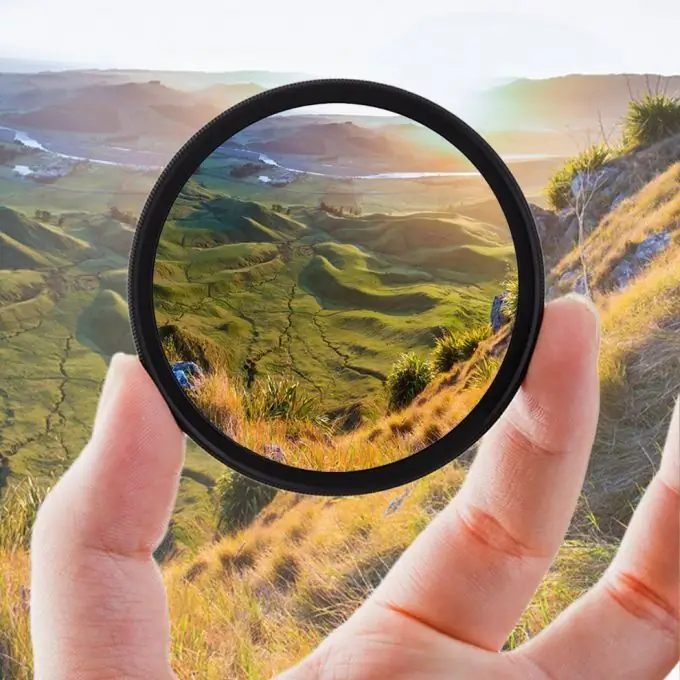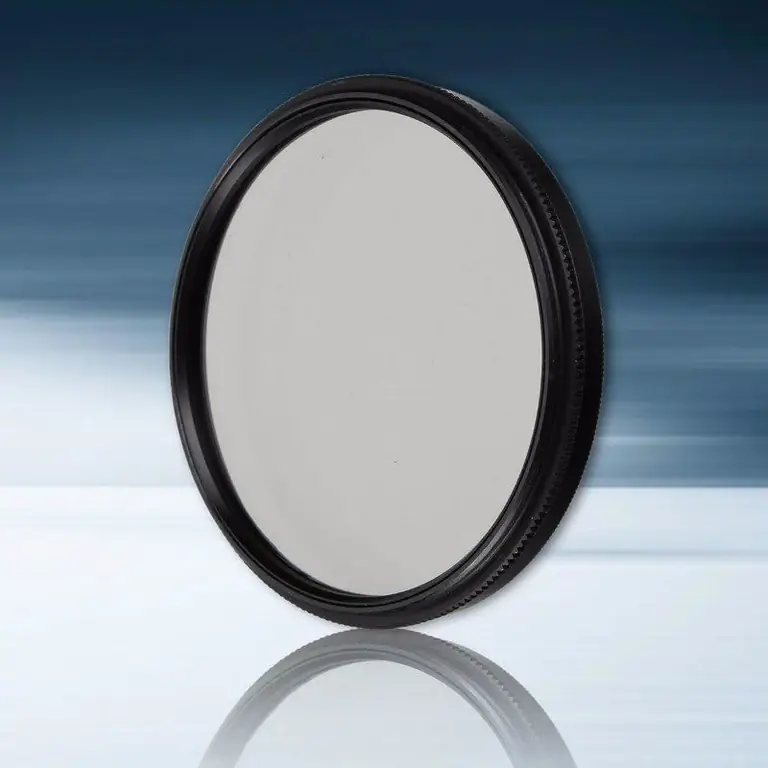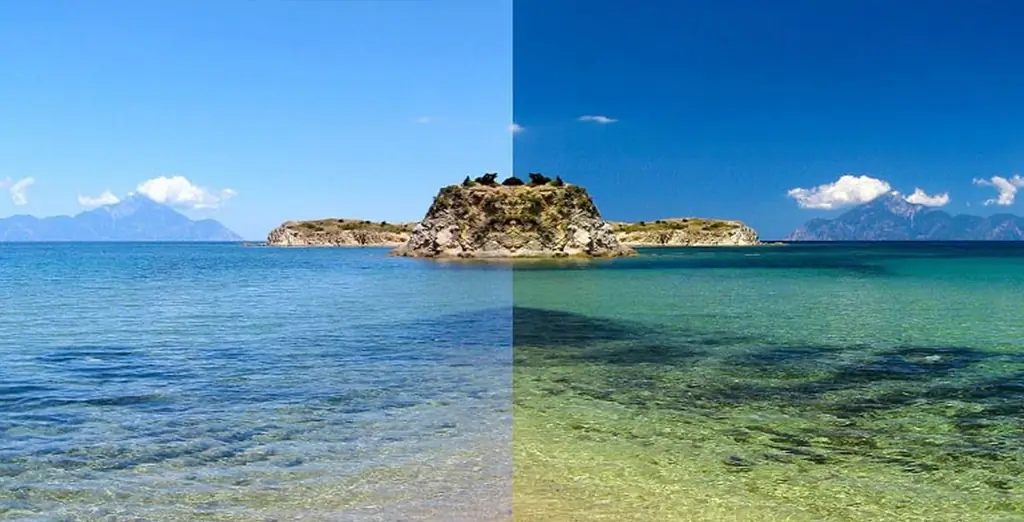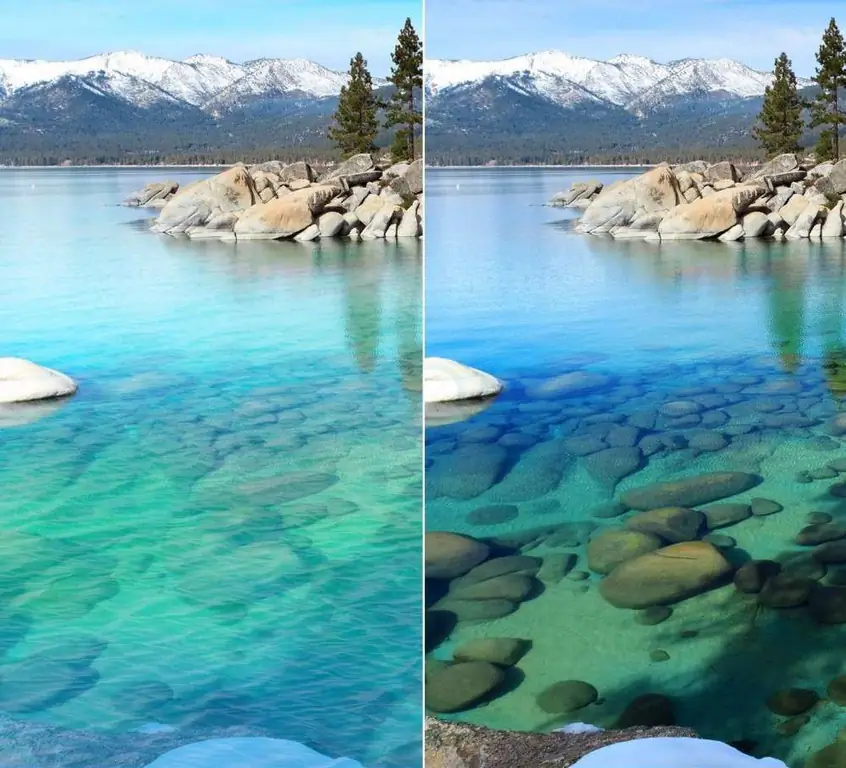In the arsenal of the modern photographer today there is a huge set of tools. This is a large selection of digital cameras, lenses and, of course, light filters. There are several types of filters for different photography needs. Due to its versatility, the most popular of these is the polarizing filter. It is used in different genres of photography: for shooting landscapes, architecture, water bodies and even macro photography. In this article, we will explain what a polarizing filter is for and how to use it.

The device and principle of operation of the polarizing filter
Polarizing filters fall into two categories - linear and circular. Linear filters are not suitable for modern cameras, but only for older cameras without autofocus and automatic exposure metering. Therefore, with the proliferation of digital cameras with autofocus function, linear filters have left the market and we will talk about filters with circular polarization.
Circular polarizer (cpl) filters reflected polarized light. Its purpose is to prevent some light waves from entering the camera lens. Reflections from various surfaces are polarized light and can be cut off with a CPL filter. Sunlight does not pass through the filter completely, and this makes it possible to achieve certain colors or achieve interesting effects in the photo. In particular, the polarizing filter makes water and glass transparent, creates a picture with more saturated colors, and smoothes the blue tone of the sky. This is the only light filter whose effect cannot be reproduced when processing a photograph.
The polarizing filter consists of 2 rings - one of them is movable, the other is not. With its fixed part, the filter is screwed onto the lens thread, and the movable part can be rotated 360 degrees. One of the filter rings has a polarizer - specially treated glass. By rotating it, the degree of the CPL filter effect is adjusted, the polarization value is adjusted, and, therefore, the desired change in the resulting image.

What is a polarizing filter for?
Let us indicate for what tasks a photographer can use a polarizing filter.
- The main property of a CPL filter is to prevent reflected polarized light from passing through. It can be used to remove glare from water surfaces and photograph the bottom of water bodies. This is one of the unique properties of this filter; with ordinary vision, a person will see only reflections of the sky on the water. The same effect is obtained when photographing through glass. By freeing the glass surface from unnecessary glare with the help of a light filter, we will see what is behind the glass.
- By using a polarizing filter, you can get warmer and more natural colors in your photo, as it removes blue sky reflections from grass, leaves and ground. It also visually increases the contrast and sharpness of the picture.
- If you are shooting a subject, a polarizing filter can help reduce glare on your subjects.
- The CPL filter allows you to remove haze from the sky and make its color more saturated, highlighting contrasting clouds on it.
- When photographing dawn or dusk, a polarizing filter enhances contrast in the sky, enhances details on the ground, and removes glare from reflective surfaces.
- While the CPL filter is mainly used for landscape photography, it can also be useful for interiors photography, for example, to remove glare from glass, TV and shiny surfaces.
- A polarizing filter, by letting in less light, can act as an ND filter. With it, you can easily shoot in very bright daylight with fast lenses (even with f / 1.4 aperture).
- Let's not forget about the lens protection. The filter protects the front lens of the lens from scratches and, if dropped, can save the lens.

How to use polarizing filters
For any tool, it is important to know how to use it correctly. Here are some helpful tips on how to use a circular polarizing filter.
- A polarizing filter is best used in sunny weather. But when it is cloudy and the lighting is diffuse, you can compose the frame without the sky. In this case, the polarizer will add overall contrast and saturation, as well as remove the glitter on the leaves and water from the image.
- For maximum effect when shooting with a polarizing filter, the photographer should be at right angles to the subject. If the sun is behind or in front of the photographer when shooting, the filter will not produce results.
- On wide-angle lenses, or zoom lenses in the “wide angle” position, the polarizing filter can produce a “vignetting” effect (darkening the image around the edges). In this case, you can rotate the filter to reduce the effect, or reduce the image capture area using the zoom. In this situation, some photographers also advise using thin polarizing filters.
- When shooting landscapes, the contrast between sky and earth is one of the main challenges for the photographer. It is almost impossible to equalize contrast across the entire frame. This photographic problem can be solved by using a ND filter in conjunction with a polarizing filter, which should equalize the overall contrast of the image.
- Since a polarizing filter reduces the amount of light entering the lens, it is recommended not to wear it on the lens in low light conditions. On the other hand, a decrease in the amount of light, and, as a consequence, a slower shutter speed, can be used for certain effects, for example, "blurring" of running water in a photograph.

When shooting with a polarizing filter, keep in mind:
- The polarizing filter requires rotation, thereby increasing composition time.
- It is not recommended to use the filter when shooting panoramas due to uneven illumination of the sky and the possibility of dark spots appearing on it.
- The polarizing filter reduces the amount of transmitted light, so the camera needs to lengthen the exposure.
- The filter must be kept clean at all times. If it is not perfectly clear, the image quality will drop dramatically.
- With a polarizing filter, it is more difficult to navigate by looking through the camera's viewfinder.
- For backlit photography (when the sun is in the frame), it is better not to use a filter, as it can give additional glare and sunbeams, especially if the filter is not too clean.
What to look for when buying a filter
- Commercially available polarizing filters differ in brand name and price. If you want quality photos, you don't have to chase the cheapest filter. Experts point out that a good CPL filter shouldn't cost less than 1,500 rubles.
- When buying a filter, pay attention to the materials from which it is made. If possible, as a check, you can look through the filter at the sky, or at the computer screen. Poor quality filters will result in an unclear image.
- If you have several lenses with different front lens diameters, you need to purchase a filter for each lens, or choose which lens you use most often and buy a filter for that lens only.
- Make sure the filter diameter matches the lens diameter.
- Do not throw away the filter case. It will help keep the filter clean and prevent scratches when not in use.
A polarizing filter is an interesting creative tool. It allows you to get unique effects on your photos. It is an indispensable component in a photographer's arsenal. The circular polarizing CPL filter is especially useful when shooting landscapes.






